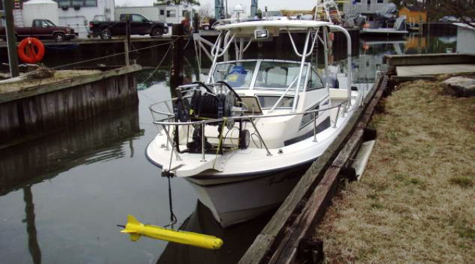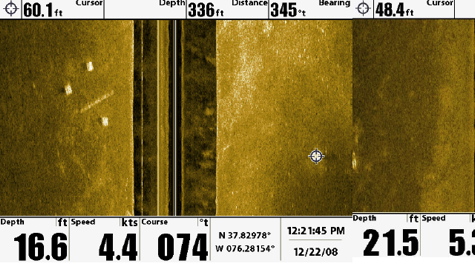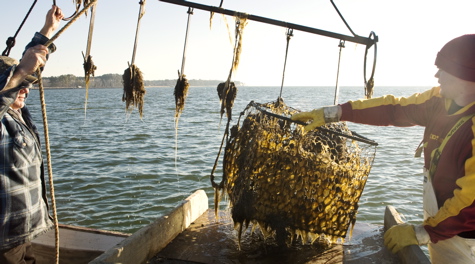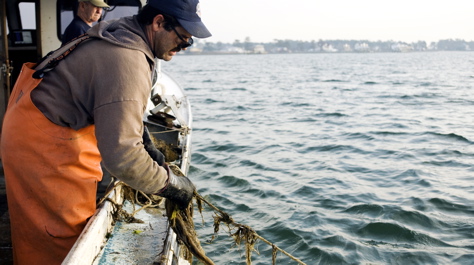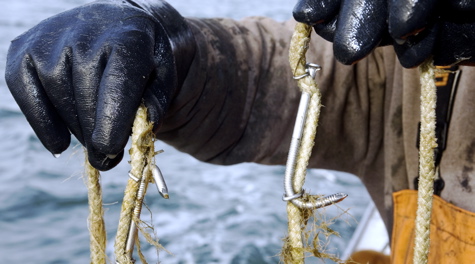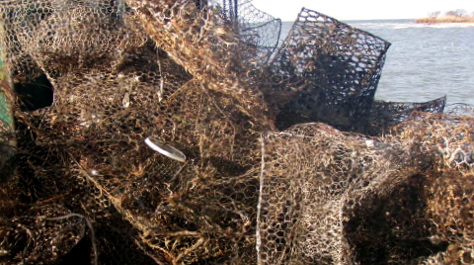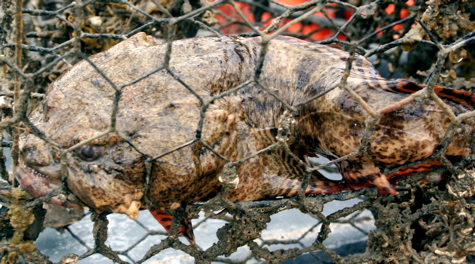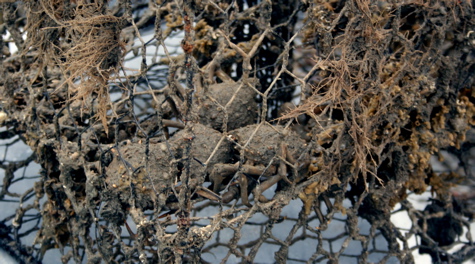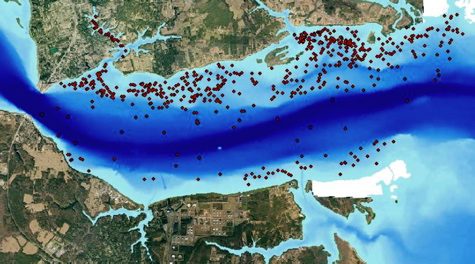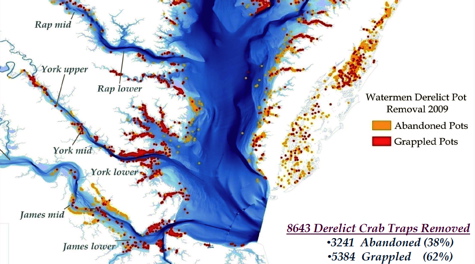‘Ghost Pot’ program benefits Bay and watermen
Program shows derelict crab pots pose extensive danger to wildlife
Virginia’s one-of-a-kind program to remove derelict crab traps from Chesapeake Bay is yielding important scientific data that will improve next year’s effort to recover these “ghost pots” and further reduce their inadvertent trapping of Bay wildlife.
The program, funded by the Virginia Marine Resources Commission (VMRC) and implemented by the Virginia Institute of Marine Science (VIMS), paid out-of-work crab dredgers last winter to use side-imaging sonar units to detect and retrieve abandoned crab pots and other marine debris that litter the bottom of Chesapeake Bay and its tributaries. Watermen were paid $300 a day, and were compensated for their fuel costs.
VIMS scientists, who set up the program and supervised the participating watermen, have analyzed the results of the program’s accomplishments in its first of three years. Their findings show that:
- More than 8,600 crab pots were recovered, along with 61 abandoned nets and other debris, including a baby stroller.
- Many of the pots had been derelict for several years, and continue to inadvertently trap and kill a variety of wildlife. One fully functioning crab pot contained large native oysters that are estimated to be several years old. The environmental impact of new, longer-lasting vinyl crab pots also was identified as a concern.
- The recovered crab pots were found to have captured over the winter more wildlife than anticipated, almost 5,000 animals, including crabs, fish, eels, turtles, a duck, and a muskrat. Scientists determined that each functional crab pot can capture and kill about 50 crabs a year.
- The 58 watermen who participated in the program covered 1,524 square miles, roughly 376,000 acres, but could not reach thousands of pots that are suspected to be in shallow water. The program will be adjusted next year to include more shallow-draft boats that can reach these pots.
“The watermen were a pleasure to work with and showed a real eagerness to help clean up the Bay,” said VIMS project leader Dr. Kirk Havens.
This is the only large-scale program of its kind in the country that seeks out and removes unmarked, submerged, derelict crab pots using side-imaging equipment. Other states routinely sweep for buoyed crab pots that are swept from their original location in storms, but do not target submerged, unbuoyed pots.
Ongoing research at VIMS funded through NOAA’s Marine Debris Program suggests roughly 20 percent of all the crab pots set in a year are lost due to storms or boat propellers that accidentally cut the pots free from their buoys.
“I’m very pleased with the success of this program and the excellent scientific findings that will help us improve this program and guide potential future regulations to help us better protect our natural resources,’’ said VMRC Commissioner Steven G. Bowman.
VMRC put up $1.3 million to get the program started last December, and VIMS handled the daily operation and supervision of the participating watermen. The program ran through March, ending just before the opening of the 2009 crab season.
Federal funds will be used to pay for the program in the next two years, through money made available in the wake of a blue crab fishery disaster proclaimed by the U.S. Department of Commerce.
In the meantime, VMRC will continue its stock-rebuilding efforts that have so far have paid handsome dividends. A 34 percent cut in the female crab harvest last year doubled the number of spawning-age female blue crabs currently in the Bay, according to a highly accurate, scientific crab population assessment conducted by VIMS over the winter.
All the recovered marine debris was photographed and disposed of in a safe and environmentally conscious manner.
For more information on program results, call Dr. Kirk Havens at (804) 684-7386.


